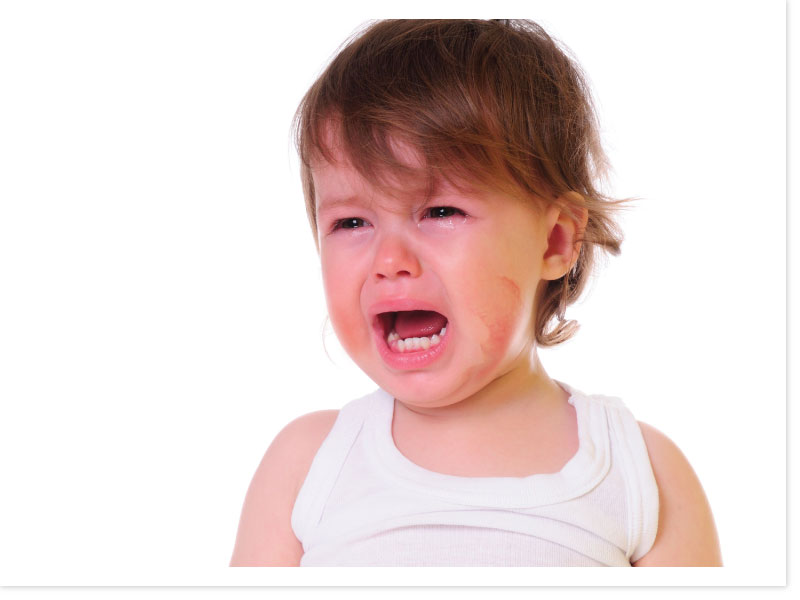by Associate Professor Giam Yoke Chin, Sr. Consultant Dermatologist, National Skin Centre, Singapore.
A topic dermatitis, also known as eczema, is a skin disorder that is very common among infants and children. It affects around 20% of all infants and children, manifesting as a rash that is itchy, red and sometimes blistering. This type of eczema usually begins during the first year of life and almost always within the first five years. It is seldom present at birth, but it can often appear during the first six weeks of life. In babies, the rash usually appears on the face, elbows and knees – places that are easy for little hands to reach and scratch. It may also spread to other parts of the body and generally creates a very uncomfortable, miserable, and sometimes painful situation for a little child to cope with. However, it is not often highlighted that protease attacks are often behind the appearance of eczema.
Highlighted
There are various ways to treat eczema, however recent advances in the study of atopic dermatitis has presented a new concept that will change the way we treat eczema and will address the issue of protease attacks. Eczema is caused by genes, and structural and immune defect that is affecting the skin barrier.
If we were to map out the sensitivity of the skin on a spectrum, we would have normal skin on one end and severe eczema on the other. Normal skin is thought to be free of rashes, pimples and has a balanced level of moisture. In reality, all skin has some degree of imperfection. The key to managing healthy skin is protection, more importantly ensuring that our baby’s skin barrier is protected.
In order to appreciate the benefits of a healthy skin barrier, we need to understand the process of new skin cell production. Skin cells divide at the bottom of the epidermis in order to produce a new supply of skin cells. These skin cells then start to mature as they move up through the skin. This forms the final upper most layer of the skin, the stratum corneum – a barrier that protects the body from the environment and normally prevents irritants and allergens from getting through the skin, and loss of water, which leads to dry skin.
The skin barrier has often been visualised as a brick wall, with the skin cells as the bricks and the lipid lamellae (a structure that locks skin cells together) as the cement. The stability of the brick wall is maintained by skin linear rods (filaments) that hold the skin cells together and allow the skin to resist shearing forces. In order to maintain a constant flexibility of the skin barrier, skin cells have to be exfoliated from the surface and this process is activated by an enzyme called protease. In a natural process, protease causes the breakdown of proteins in the skin for renewal process. The problem with eczema starts however when protease becomes overactive.
While defective skin barrier can be triggered by genes, soaps, detergents, topical steroids and scratching, protease attacks can also contribute to the development of eczema. Healthy skin has a slight acidic pH of 5 to 6. With eczema, the skin tends to be more alkaline in nature which is more than pH7. Alkaline skin tends to enhance protease activity which leads to a breakdown of the protective skin barrier and worsens the condition of your baby’s eczema.
When the skin pH becomes alkaline, the protease enzyme becomes overactive resulting in breakdown of cells and skin barrier failure. This leads to an increased permeability of the skin which causes it to be sensitive and allows penetration from the environment, including bacteria, virus and allergens. While special attention should be given to those with pre-existing sensitive skin conditions, everyone is susceptible to protease attacks, which is why it is important to control protease activity and ultimately avoid protease attacks.
The skin barrier is thinnest at skin sites that are more vulnerable, hence the appearance of eczema on the face, elbows and knees. These are areas where there is very little barrier reserve making it susceptible to irritants and allergens which penetrate the skin barrier and trigger eczema flare ups.
It is important for parents to understand and educate themselves about the various treatments available for their baby’s eczema. Choose treatment products that are gentle and kind on your babies skin, and do not contain strong foaming detergents (sodium lauryl sulphate (SLS) and sodium lauryl ethyl sulphate (SLES), which are well known skin irritants that can disrupt the protective skin barrier.
Protection can also be achieved by choosing treatments that help maintain the pH balance of your baby’s skin in order to avoid protease attacks. Those who have sensitive skin can control the activity of protease by using mild soaps with very little detergent in them, or by protease inhibitors to stop protease activity.
Preventive treatment and long term hydration in moisturisers as well, is the key to maintainence and management of eczema.
